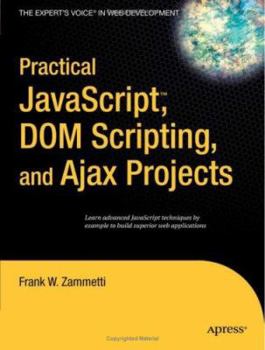Practical Javascript, DOM Scripting and Ajax Projects
JavaScript is hugely poplar in modern web development. It has good support in modern web browsers and improved development practices, leading to much interest in topics such as Ajax and DOM Scripting.
This "learn by example" book offers 10 complete JavaScript projects that will save web developers countless hours of development time. These projects can serve as samples to learn from and/or be adapted for use in other projects. The 10 projects all address common needs in modern web applications, including a utility library, a validation framework, a GUI widget framework, a dynamic event calendar application, a drag and drop shopping cart, and more Coverage details JavaScript best practices, Ajax techniques, and some of the most popular JavaScript libraries, such as Prototype, Script.aculo.us, and the Yahoo YUI library.














